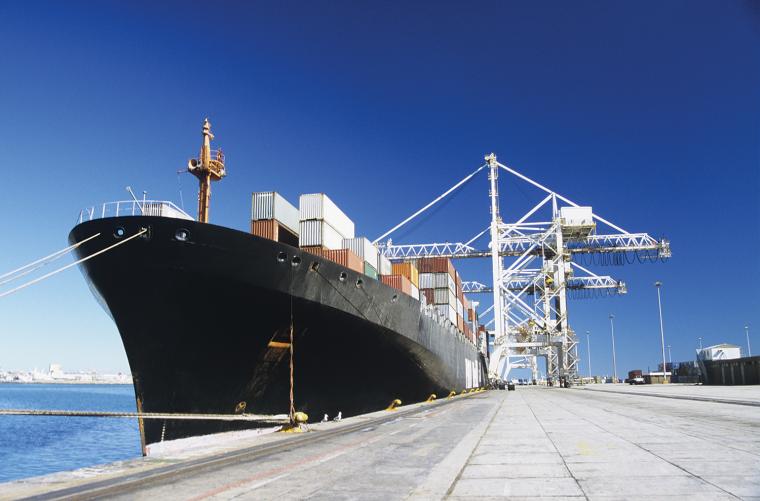
With U.S. trade in flux — exports remain strong, but imports have softened — analysts are still seeing the potential for positive long-term growth.
“Although some short-term choppiness is anticipated, port-proximate industrial markets are poised to see healthy growth long-term due to both the strategic need for facilities around major maritime ports and key population centers,” said Jason Price, Senior Director, Americas Head of Logistics and Industrial Research for Cushman and Wakefield. “Double-digit rent growth over the next five years is forecasted for eight of the 13 industrial markets associated with the top 10 U.S. ports.”
For this reason, many U.S. ports are continuing with expansion and refurbishment, despite warnings of short-term slowdowns and rent declines. In this feature, we’ll look at a snapshot of several regions around the country that are continuing to build capacity in anticipation of long-term growth.
Port of Brownsville, Texas
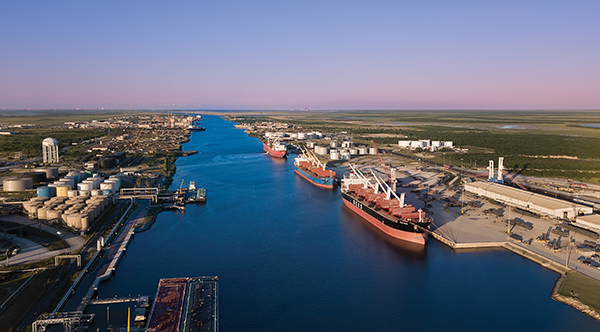
At the southernmost point of Texas, where the Rio Grande meets the Gulf, the Port of Brownsville is driving a new era of growth and opportunity. As the only deepwater seaport located on the U.S.-Mexico border, the port has become a gateway for trade, a magnet for investment and a catalyst for opportunity across South Texas. Currently, more than $20 billion in projects are in the pipeline.
In 2023, the port moved 11.2 million tons of waterborne cargo, up from 9.1 million tons in 2022. That momentum carried throughout 2024, with total cargo reaching 28 million tons, a 57 percent increase from 2023. In addition, 2024 revenue at the port surpassed $30 million for the fourth consecutive year, reaching $43.3 million.
Contributing to the port’s success are consistent investments in infrastructure. A centerpiece of that effort is the Brazos Island Harbor Channel Improvement Project, which will deepen the 17-mile ship channel from 42 feet to 52 feet. The increased depth will allow larger vessels to enter more safely, reduce wait times and improve overall efficiency.
One of the port’s most exciting developments is its new 118-acre business park, built for light and medium industrial users. In April 2024, Westa Inc. became the first tenant, announcing a $20 million development at the site. Westa Inc. will receive grains via barge from the Midwest, enhancing the company’s supply chain operations for its high-capacity flour mill and sunflower seed processing plant set to employ 120 people. In addition, Texan Cement is investing $42 million to transform its Port of Brownsville operation from a distribution center into a production facility capable of manufacturing 400,000 tons of Portland cement annually.
“The Port of Brownsville’s strategic advantages and wide-ranging benefits continue to attract new industries, with dozens of projects in the pipeline representing billions in private investment,” said William Dietrich, Port Director and CEO. “These forward-looking developments further strengthen our position as a premier gateway for international trade and opportunity for the State of Texas, providing jobs and economic vitality to the communities we serve.”
Port Freeport, Texas
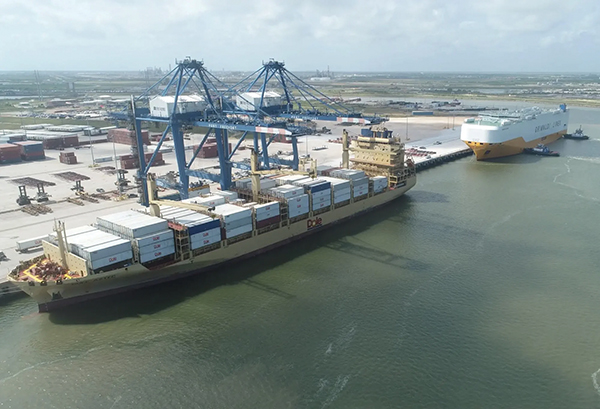
Located in Brazoria County, Texas, Port Freeport is an independent governmental body authorized by an act of the Texas Legislature in 1925. Freeport is located approximately 60 miles south of Houston and is accessible via State Highway 36 and Highway 288. Port Freeport is the shortest and soon-to-be deepest channel on the Gulf Coast. Through strategic initiatives such as the Freeport Harbor Channel Improvement Project, Port Freeport will be the deepest port on the Gulf Coast with a maximum depth of 56 feet and an operational depth of 51 feet. Port Freeport is the shortest deepwater channel on the Gulf Coast with a one-hour transit time from the pilot station to the public docks.
The port offers facilities that meet the needs of a variety of cargo types. It is a leading port in the export of crude oil and natural gas liquids and ranks sixth in chemicals nationally, 15th in total foreign waterborne tonnage and 26th in containers.
A 2022 Economic Impact Study by Texas A&M Transportation Institute revealed that, nationally, the Freeport Harbor Channel generates 266,300 jobs and has a total economic output of $157.3 billion. Shipping partners include Chiquita Fresh N.A., Dole Fresh Fruit, Dow Chemical, Fresh Del Monte Produce, Ford Motor Company, General Motors and more.
In late 2024, the Port Commission voted to adopt a zero tax rate, marking the first time in Port Freeport’s history that it will be self-reliant, and no taxes will be assessed.
Port of Little Rock, Arkansas
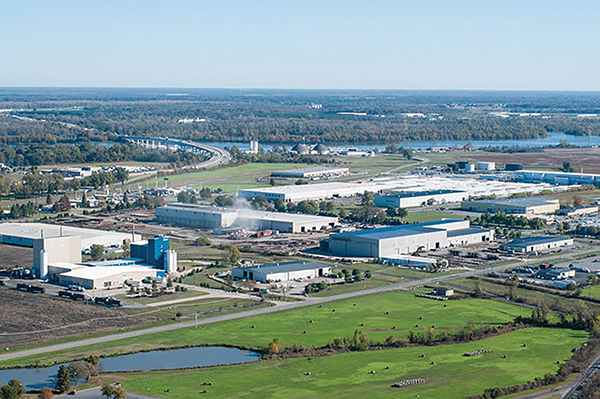
The Port of Little Rock, a flood-controlled, nine-foot, year-round, ice-free navigable channel, is located approximately seven miles east of downtown along the banks of the Arkansas River, less than one mile from the Bill and Hillary Clinton National Airport. Little Rock is located in the geographic center of Arkansas and is the state’s capital city and business hub. All modes of transportation converge at the port: water, rail and motor freight, offering convenient intermodal shipping solutions. The Port of Little Rock’s four target industries are chemical manufacturing, machinery manufacturing, advanced metals manufacturing and advanced food products.
Agriculture is essential to Arkansas’s economy, and agricultural chemicals make up a large part of the industry. The Port of Little Rock is equipped to become a heavy producer and distributor of agricultural chemicals, including fertilizers and pesticides.
At 4,000 acres, the Port of Little Rock is Arkansas’s largest industrial park and is home to 44 businesses from five different countries for total employment of approximately 8,000 people. The port is part of the 448-mile McClellan-Kerr Arkansas River Navigation System, which runs from the Mississippi River northwest to 15 miles east of Tulsa. The port caters to worldwide markets as Foreign-Trade Zone #14, and features immediate, dual rail access to both Union Pacific and Burlington Northern Santa Fe railroads as well convenient access to port-owned warehouses.
Since 2015, job creation and capital investment from new and expanded projects at the port have resulted in a total impact of more than $1 billion. In 2022, the port added TREX Company and an Amazon Distribution Center as partners.
Port of Morgan City, Louisiana
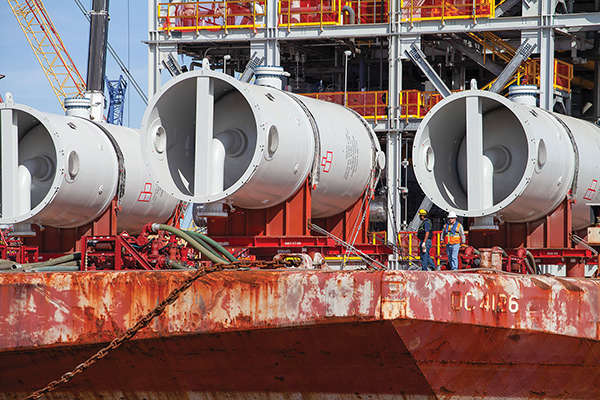
The Port of Morgan City is the birthplace of the offshore oil exploration industry. It has been an avenue of both domestic and international trade since 1957, with direct access to ocean-going traffic across the globe. Located in the heart of the Gulf, the Port is located at the confluence of the Atchafalaya River and the Intracoastal Waterway at Gulf Intercoastal Waterway West of Harvey Lock (GIWW WHL) Mile Marker 95.
The Port of Morgan City features a 20-foot navigation channel, which extends from the sea buoy 20 miles offshore through the Atchafalaya River and Bayous Boeuf, Black and Chene. It offers a 1,200-foot waterfront that can easily accommodate large vessels; a 20,000 square-foot warehouse with security and sprinkler systems adjacent to rail; ample highway access; a large storage area and marshalling yard for containers, forest products, coated pipe, structural steel and machinery; and a BNSF rail spur that provides easy access to the U.S. and Union Pacific rail system. The port is ideally equipped to handle bulk, breakbulk, project and container cargoes.
In recent years, the port has received $10 million in funding from the U.S. Department of Transportation’s Maritime Administration’s Port Infrastructure Development Program. The funding has enabled the Morgan City Western Dock Expansion - Phase 3B Project, by adding 1.6 acres of concrete laydown area and building an additional 8,880-square-foot wharf-relieving platform structure to support a 440-foot by 40-foot wharf extension. The project complements Phase 3A that was funded by the port and the State of Louisiana and completes all phases of the port’s Western Dock Expansion project.
Additional activities at the Port of Morgan City include retrofitting an offshore supply vessel (OSV) for space tourism, operating a sprawling scrapyard, loading components onto a barge bound for Venture Global’s forthcoming LNG export facility in Plaquemines Parish and building berthing barges and submarine drydocks for the U.S. Navy
Port of Pascagoula, Mississippi
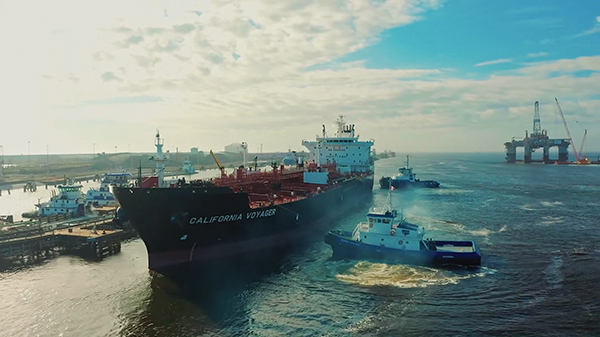
Port Pascagoula, located on the southeastern coast of Mississippi, is a full-service deepwater port with modern facilities for handling cargo from around the world. Cargoes include crude oil and clean petroleum products, paper rolls, forest products, steel and other bulk and breakbulk goods.
The port’s two harbors (Pascagoula River and Bayou Casotte) include a combination of public and private terminals handling a combined 32 million tons of cargo through its channels annually. Port Pascagoula currently ranks nationally in the top 30 ports in the U.S. and number one in Mississippi for total gross tonnage. It is also officially designated as Foreign-Trade Zone #92.
Port Pascagoula is strategically positioned to support maritime commerce in Mississippi, serving as a vital economic engine for the region. Its central location and advanced facilities make the port a preferred hub for energy, manufacturing and agricultural industries. Port Pascagoula is strategically located on federal shipping channels, nine miles from Interstate 10, giving access to U.S. interstate/highway systems and close working partnerships with rail service connections. The port is equipped with the facilities, technology and manpower to efficiently handle a variety of cargoes. Pascagoula rail service links are the CSXT direct and access to the Canadian National Railroad via the shortline carrier Mississippi Export Railroad.
Beginning last year, the port has announced a new direction and vision for Port Pascagoula through rebranding and business recruitment. Port directors said the rebranding aims to create a new look to mirror the kind of progress it is making in the industry.
Port of Port Angeles, Washington
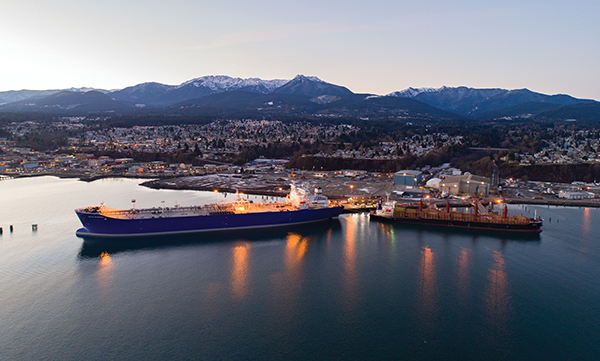
The Port of Port Angeles is a key maritime and industrial hub on the North Olympic Peninsula, serving as a vital market access point for the region. The port operates three main deepwater terminals that can accommodate up to five vessels at a time. These terminals handle a variety of goods, including logs, lumber, pulp, paper, wood chips, chemicals, petroleum products and project cargo. The port has significant facilities for maritime activities, including pilot services, vessel repair and environmental services, making it well-suited for both inbound and outbound cargo.
The port is crucial to the economic development of Clallam County, supporting jobs and industries related to maritime trade, manufacturing and timber. The port’s activities are a significant driver of local employment, particularly in sectors such as logging and wood products, which remain central to the area’s economy.
The Port of Port Angeles primarily handles forest products, including logs, lumber and wood chips, which are exported to international markets. In addition to forest products, the port manages the import and export of chemicals, petroleum products and other general cargo, using its facilities and equipment designed to support heavy lifting and specialized cargo needs.
In recent years, the tenant base has expanded, and today the port has more than 60 tenants offering a wide range of services such as topside repair, composite manufacturing, aviation components, commercial diving and restaurants. The port partners with public and private entities to develop additional property and identify other opportunities to create job growth in Clallam County.
The combination of strategic location, diverse facilities and ongoing investment underscores the port’s role as a critical economic engine for the region.
Port Tampa Bay, Florida
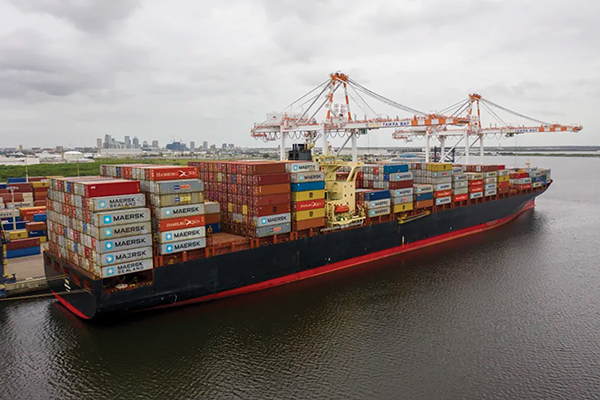
Port Tampa Bay has emerged as Florida’s new supply chain solution for container cargo. The port handles 33 million tons of cargo each year across its 5,000 acres and is a major shipyard-ship repair center as well as a large fertilizer export port. The port is responsible for $17 billion in economic impact annually, supporting more than 85,000 jobs in Central Florida.
In recent years, Port Tampa Bay has added capacity, with more expansion underway, and is ready to welcome new business, offering savings in inland delivery costs versus other gateways. The addition of direct Asia container services in the last few years and more recently new and expanded services with Mexico and Central America have provided support for Florida’s Tampa/Orlando I-4 Corridor, a hub for distribution, logistics and manufacturing. The I-4 Corridor is home to the largest concentration of distribution centers in the state, which allows for multiple round trip deliveries per day from Port Tampa Bay compared to the traditional routes via congested out-of-state ports.
The port handles a diverse mix of bulk, breakbulk and container shipping, and serves as an energy products gateway for Central Florida.
Expansion now underway at Port Tampa Bay includes adding more storage and berth capacity, additional cranes, a new gate complex and trans-loading facilities. Together with container terminal operator partner Ports America, Port Tampa Bay is continuing to expand and upgrade facilities, having recently added 25 acres of paved storage, with construction about to begin on another 30 acres, bringing the total container footprint to 100 acres. A third deep-water berth is also being added, along with three additional cranes and a new gate complex, making a total of five Post Panamax gantries.
Port of Philadelphia, Pennsylvania
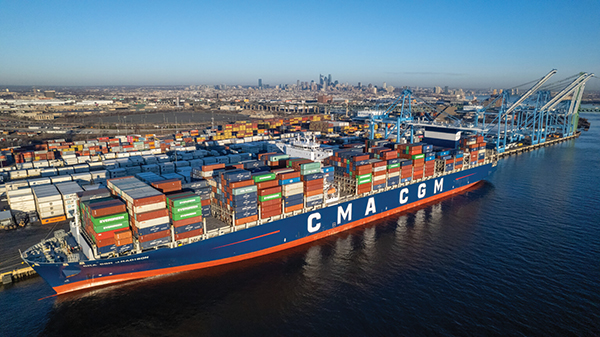
With its proximity to major population centers such as New York, Philadelphia, Baltimore and Washington, DC, the Delaware River is the top shipping point on the East Coast for all types of goods, including automobiles, steel, perishables and cocoa beans. The Port of Philadelphia (known as PhilaPort) manages shipping operations for several of the main terminals on the Delaware River, and it continues to invest in the facilities to keep up with the rising demand for its services. It is also the grantee of Foreign-Trade Zone #35, which covers Southeastern Pennsylvania. Recently, the river was dredged to a depth of 45 feet to enable larger vessels to call on the Port of Philadelphia.
In October 2024, PhilaPort unveiled a roadmap for the future titled “PhilaPort Strategic Plan: Destination 2040,” which charts the course of the Port of Philadelphia for the next 15 years and beyond, including major investments in infrastructure to elevate port capabilities, drive economic growth and expand capacity. According to PhilaPort, demand has been growing steadily for the past decade, with a compound annual growth rate of eight percent, and growth is expected to continue along similar trends.
Destination 2040 is based on five themes designed to ensure that PhilaPort maintains its leadership position well into the future: growth and expansion, safety, sustainability and community. Among the goals of the strategic plan are tripling container capacity to three million; land acquisition and modernization of terminal facilities; the addition of hundreds of thousands of square feet of new warehouse space resulting in a 20 percent increase in breakbulk cargo tonnage leading to nearly $3 billion in new business revenue; the creation of nearly 9,000 new direct jobs and more than 10,000 indirect jobs; and generating $170 million in revenue from state and local taxes.
Currently, the Pennsylvania Department of Transportation is encouraging ocean carriers moving containerized cargo to apply to the Pennsylvania Intermodal Cargo Growth Incentive Program (PICGIP). The PICGIP is a tool to compete with other east-coast ports in attracting new ocean carriers and new trade lanes to Pennsylvania by incentivizing shippers to move cargo through Pennsylvania ports. The program provides up to $1 million annually to participating ocean carriers that move containerized cargo through Pennsylvania’s ports. T&ID

